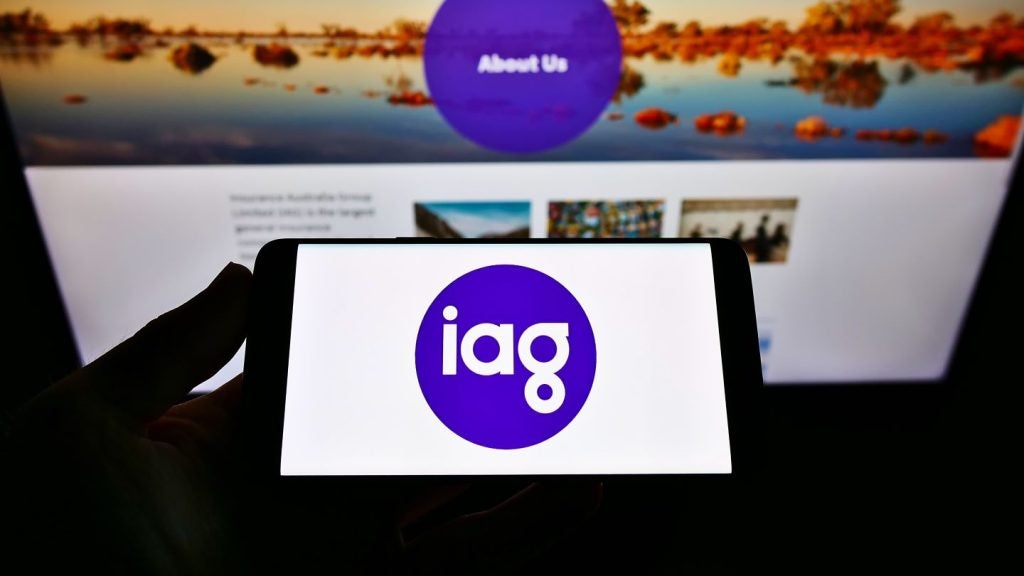Canadian life insurers
weathered the global financial crisis thanks to a cautious
investment stance and the strength of the Canadian economy. The
only dark shadow for Canadian life insurers has been their US
operations, where variable annuities have done considerable damage.
Robin Arnfield
reports.

Access deeper industry intelligence
Experience unmatched clarity with a single platform that combines unique data, AI, and human expertise.
 Canadian life insurers are in
Canadian life insurers are in
a better state of financial health than their counterparts
worldwide, believes Karen Pauli, a research director at consultancy
TowerGroup’s insurance practice. Expanding on this bold statement,
she told LII this is because Canadian life insurers are
“very conservative,” even more so than US life insurers.
She continued: “Canada’s housing sector never
had the horrific characteristics of the US housing market, so there
weren’t the problems with mortgages and associated derivatives that
messed up US insurers and banks.”
Canadian insurers were, however, not spared
misery in the US.
“Big Canadian life insurers are globally
active and heavily into the US,” said Pauli. “But, if you isolate
their Canadian operations, you will find these in a better state
than their foreign operations.”

US Tariffs are shifting - will you react or anticipate?
Don’t let policy changes catch you off guard. Stay proactive with real-time data and expert analysis.
By GlobalDataRating agency Moody’s noted in a recent study
that Canadian life insurers’ Canadian franchises weathered the
2000-2009 financial crisis well, but not their US operations.
To different degrees, each Canadian life
insurer rated, must strengthen its US franchises damaged in the
past 18 months, stressed Moody’s in its Canadian life industry
outlook.
“Industry profitability will remain under
pressure in 2010,” the agency stated. “We expect profitability to
remain strained due to the Canadian life insurers’ weaker foreign
subsidiaries.”
Two Canadian insurers, Sun Life Financial and
Manulife, were particularly hard hit by their US operations’
exposure to variable annuities (VA).
Moody’s noted that product risk for major VA
players, principally Manulife and Sun Life, deteriorated materially
in 2009. These players underestimated risk inherent in VA products,
particularly with respect to guarantees.
“The equity market downturn caused a
substantial rise in capital and reserve requirements for the
[variable annuities] business. In addition, Manulife’s hedges for
this risk were not fully adequate,” stated Moody’s.
“Manulife was the most affected [of Canada’s
life insurers] by problems in the US,” Clark Troy, senior analyst
at consultancy AiteGroup, told LII.
“This is because Manulife bought US insurer
John Hancock in 2003, and Hancock offers variable annuity
products.”
Marketing
Pauli noted that Canada is a mature
market.
“The economy is stable, and the general
overall needs of the population are easy to predict,” she said.
“But one area of growth in Canada is affinity life insurance, for
example selling to specific affinity groups such as doctors,
nurses, dentists or lawyers.”
Another growth segment is the big Asian
population in Canada’s British Columbia province.
“Asians gravitate towards buying life
insurance rather than non-life insurance products – and they’re
heavily geared towards saving,” Pauli said. “As Asians like to
save, you have to emphasise the annuity aspect of life insurance
products sold to them.”
“Immigrants to Canada have a propensity to be
savers, so they like universal life insurance,” said Stephen
Carter, senior vice-president at BMO Life Assurance Company, a unit
of Bank of Montreal.
“BMO Life sees immigrants as a big market
opportunity.”
Under government regulations, Canadian banks
are only allowed to sell credit-related and travel insurance via
their branches. They have to establish separate companies with
their own distribution networks to sell life insurance. Craig
Weber, senior vice-president at US consultancy Celent, said this is
unlikely to change soon.
But Canadian banks have circumvented
regulations.
“For example, RBC Insurance will have an
office next door to a RBC bank branch, so there is a physical wall
separating the insurance office from the branch, but they are
geographically close,” Weber said.
But this does not solve another problem faced
by what are Canada’s versions of bancassurers: product silos and
legacy IT systems. These have limited the ability to get an
integrated view across all the client’s holdings which in turn
limits cross-selling opportunities, said Weber.
“Canadian banking customers expect their bank
and its insurance subsidiary to work together and to have an
integrated view of all their products with the bank and its
insurance arm,” Weber said.
“The customers will expect their bank’s
insurance arm to know more about them than it actually does, and to
offer them quick and convenient service.”
Weber added that customers will also not know
about the ban on banks selling insurance direct, so delays in
setting up insurance will frustrate them.
From a regulatory perspective things are set
to get tougher for banks.
In January 2010, Canadian finance minister Jim
Flaherty said he planned to take action because, despite the ban on
bank branch sales of insurance products, some Canadian banks have
links on their websites promoting their insurance operations.
Flaherty said: “We have made it clear to banks
that the policy has not changed, they cannot market insurance
products through their branches… Some issues arose last year
because of the use of internet [for life insurance marketing] which
can be attributed to bank branches.”
A Department of Finance spokesperson told
LII: “The government intends to adopt new policy measures
to reflect technological advances. This means bank websites will
need to respect insurance business requirements currently applying
to branches.”
The big three
Canada’s life industry is dominated
by three players: Manulife, Sun Life Financial and Great-West
Lifeco. In addition, there are several smaller players, which,
noted Moody’s, have had some success.
Together, Manulife, Sun Life and Great-West
represent three-quarters of total Canadian life insurers’ general
fund assets and 96 percent of total net income.
“Each of these companies has solidified its
domestic position through mergers and acquisitions, and each firm
has substantial market share in all of the three major Canadian
market segments – individual life, group products, and asset
accumulation,” Moody’s noted.
Great-West’s two units, Canada Life and London
Life, had a 31% share of Canadian direct life premiums in 2008,
Manulife 23% and Sun Life 21%.
In terms of premium sales, Industrial Alliance
and Financial Services is the fourth-largest life insurer and
operates under two brands: Industrial Alliance and Industrial
Alliance Pacific Life.
According to the Canadian Life and Health
Insurance Association, in 2008 Canadians paid C$3.6bn ($3.46bn) in
group life premiums and C$11.3bn in individual life premiums. At
the end of 2008, Canadians owned C$3.3trn of life insurance, up
6.6% on the amount in 2007 and double the amount in 1998.
Individual life insurance owned by Canadians
rose to C$1.829trn in 2008 from C$1.717trn in 2007 and C$1.609trn
in 2006. Group life insurance rose to C$1.509trn in 2008 from
C$1.414trn in 2007 and C$1.331trn in 2006.
Of the total in-force individual life
insurance at the end of 2008, 47 percent was permanent and 53% term
insurance. At the end of 2008, protection offered via permanent
life insurance policies was split evenly between whole life (47%)
and universal life products (53%).
According to research organisation LIMRA,
Canadian new life insurance premiums were up 2% in 2009 compared
with 2008. Whole life sales rose 10%, term life sales rose by 7%,
and universal life sales fell 7% compared to 2008.
In monetary terms, universal life had the
biggest market share in 2009, with 37% of new premiums compared to
41% in 2008. Both term life and whole life saw increases in their
market share, respectively from 31% to 33% and 28% to 30%.
Paul Fryer, vice-president, individual
insurance at Sun Life, said the rise in term life sales is due to
the recession, with Canadians seeking affordable protection.
“People realise they can upgrade term life
policies to permanent later on,” Fryer said.
Acquisitions
Canada’s life market continued to
consolidate in 2009, with the largest deal coming in September when
Manulife acquired Canadian wealth manager AIC Mutual Funds. The
deal added almost C$4bn to Manulife’s mutual funds under
management, improving its market position from 18th to 13th in the
third quarter of 2009.
In January 2009, BMO paid C$375m for AIG’s
Canadian insurance business, AIG Life of Canada, which in 2008 had
400,000 customers. The unit has been integrated with BMO’s life
operations and renamed BMO Life Insurance Company.
A benefit of the deal is that BMO’s wealth
management operation BMO Nesbitt Burns, which in 2008 had 800 life
insurance agents, is able to sell products developed by AIG.
“BMO has become the only other Canadian bank,
apart from RBC, to have its own life insurance product
manufacturing base and access to an independent sales advisor
network,” BMO Life’s Carter said.
In June 2009, Canadian insurer Unity Life of
Canada acquired 100,000 life and health insurance policies plus a
small number of group annuity contracts from MetLife Canada, a
subsidiary of US-based MetLife.
Winding-up 2009, Industrial Alliance and
Financial Services (IAFS) paid C$9m in December for MD Life
Insurance Company’s individual life insurance portfolio. MD Life, a
firm offering life insurance and annuity products to Canadian
doctors, is 55% owned by MD Physician Services, a Canadian Medical
Association company, and 45% owned by IAFS.
The acquired life insurance portfolio contains
8,800 policies, mainly universal life, which generated C$72m in
premium income in 2009. The deal includes a distribution agreement
whereby MD Physician Services’ MD Insurance Agency subsidiary will
offer IAFS products to Canadian doctors.
According to rating agency Standard &
Poor’s, IAFS’s growth strategy includes further acquisitions of
small blocks of business and second- and third-tier wealth
management and insurance companies in Canada.
Since 2001, it has acquired 15 businesses or
blocks of businesses, primarily in the wealth management space.
Across the border, IAFS launched a
new US unit, IA American Life Insurance, in February 2010,
headquartering it with Industrial Alliance Pacific Life’s US unit.
Together with IA Pacific, IA American will offer life and annuity
products to middle-income families. The first new product from IA
American is SecureLife Plus universal life insurance, which offers
coverage to individuals up to age 120.
“Universal life is a big product line for us,”
IAFS vice-president for investor relations Jacques Carrière told
LII. “Some 53% of our Canadian sales in the first nine
months of 2009 were for universal life.”
According to S&P, IAFS is prepared to
invest up to C$250m in the US in the next five years.
Signs of recovery
Backing its ambitious expansion
plans, IAFS reported record net income of C$205.8m in 2009, up from
C$66m in 2008. Net income in the fourth quarter of 2009 was a
quarterly record, C$67.4m.
IAFS’ profit recovery reflected a broad
industry recovery, although Great-West was a notable exception,
reporting net income of C$1.63bn in 2009, down from C$2.018bn in
2008. Fourth-quarter 2009 net income also disappointed at C$443m
compared with C$525m from the year-ago period.
Sun Life also could not match 2008’s
performance, with net income in 2009 down 32 percent to C$534m.
However, fourth-quarter 2009 net income rebounded from C$129m to
C$296m.
Of the majors, Manulife enjoyed the strongest
recovery, with net income up from C$517m in 2008 to $1.4bn in 2009.
Fourth-quarter net income rebounded from a C$1.87bn loss in 2008 to
a C$868m profit in 2009.
|
CANADA |
|
|
Life insurance industry – market |
|
|
% |
|
|
Great-West Life |
31 |
|
Manufacturers Life |
23 |
|
Sun Life |
21 |
|
Standard Life |
4 |
|
BMO Life |
3 |
|
RBC Life |
3 |
|
Empire Life |
2 |
|
Transamerica Life |
2 |
|
Co-operators Life |
2 |
|
Industrial-Alliance Pacific Life |
2 |
|
Other |
7 |
|
Total |
100 |
|
Source: Moody’s Investors Service |
|







